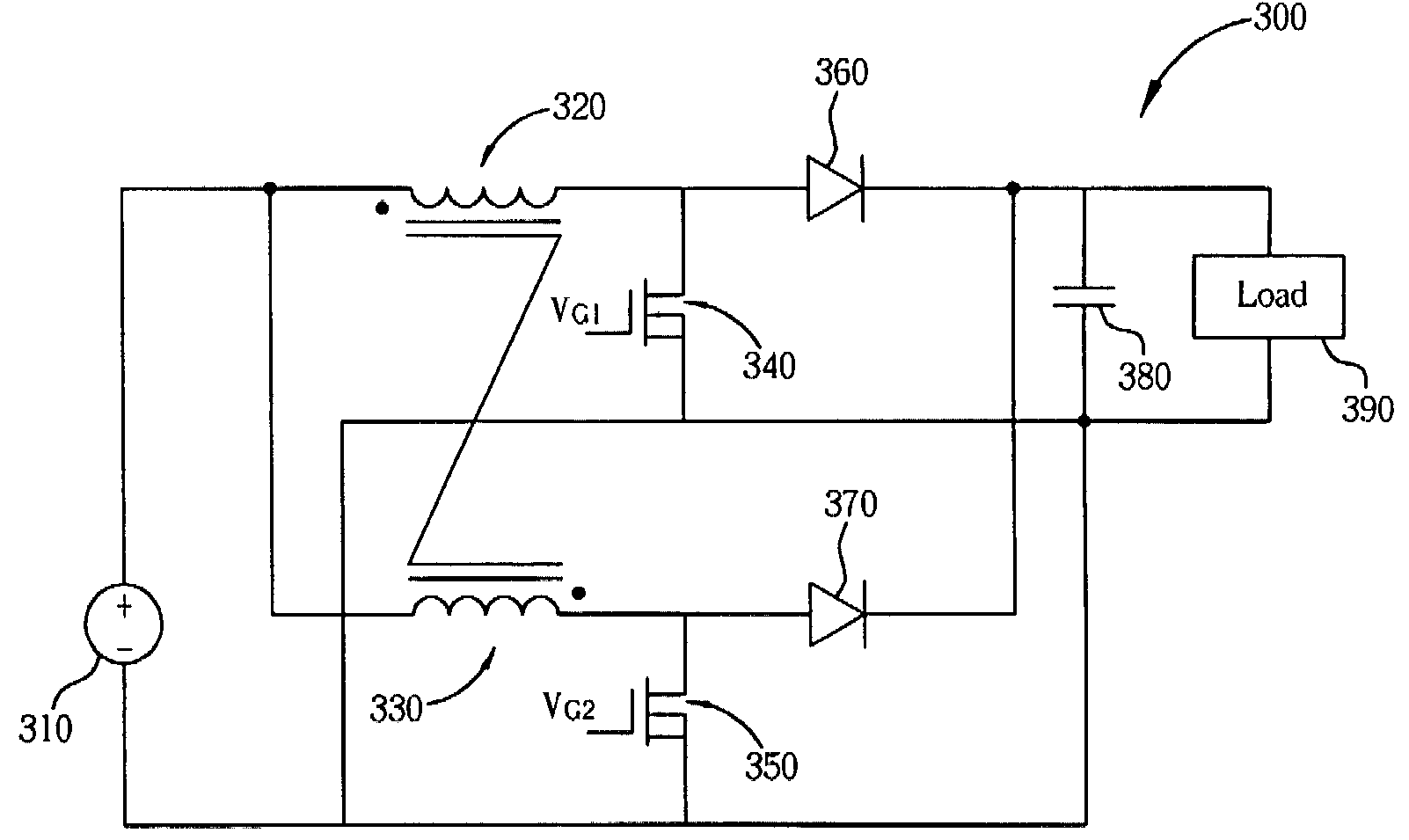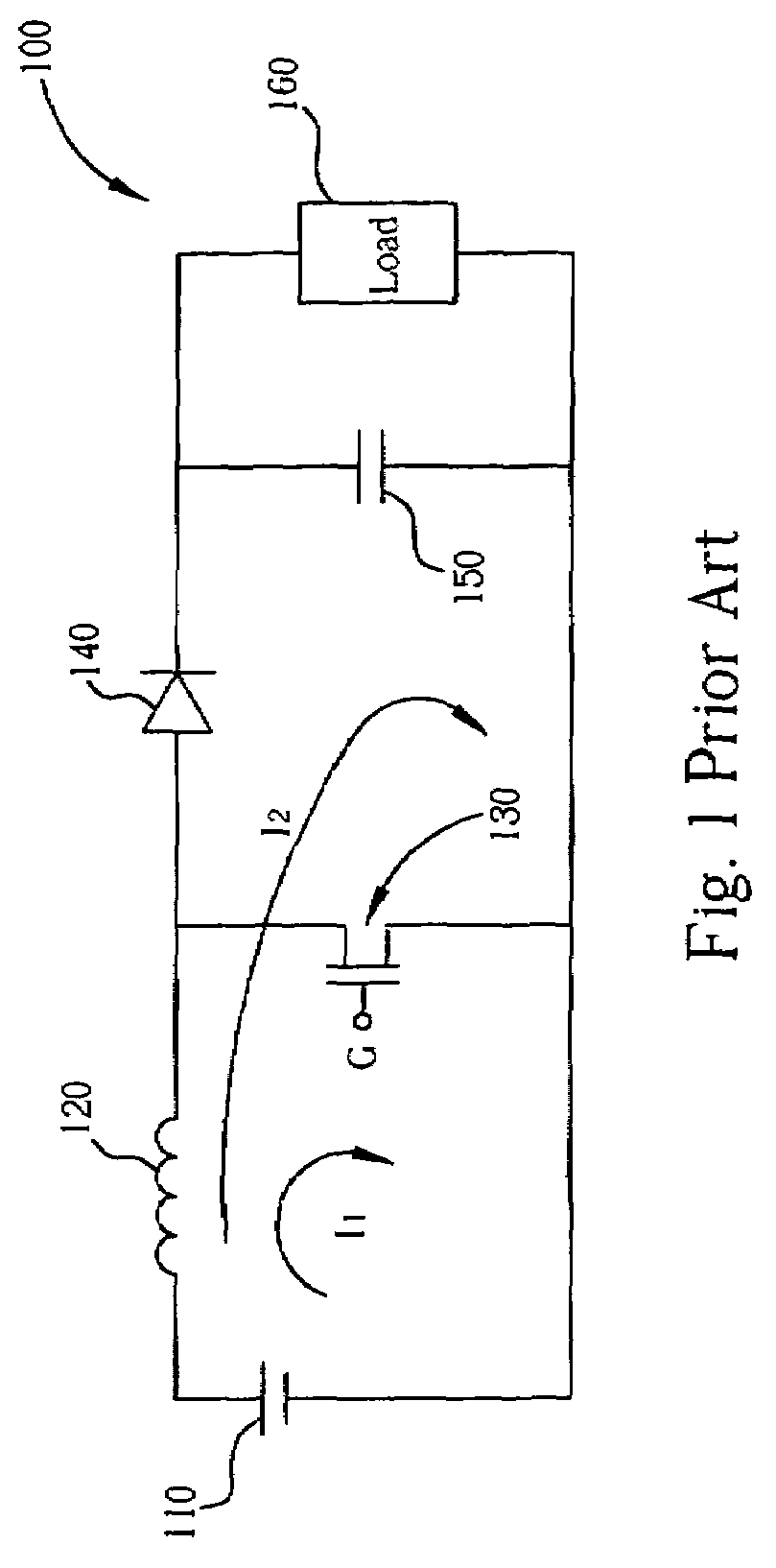Boost converter
a converter and boost technology, applied in the field of boost converters, can solve the problems of reducing efficiency, bringing the extra burden of heat dissipation mechanism, and relatively expensive power switch components capable of sustaining high stress and low switching loss, and achieving low switching loss and low cos
- Summary
- Abstract
- Description
- Claims
- Application Information
AI Technical Summary
Benefits of technology
Problems solved by technology
Method used
Image
Examples
Embodiment Construction
[0020]Please refer to FIG. 3. FIG. 3 is a circuit diagram of a boost converter 300 according to an embodiment of the present invention. In this embodiment, the boost converter 300 includes a voltage source 310, two conjugate coils 320 and 330, two power switch components 340 and 350, two switch components 360 and 370, and a filter 380. The voltage source 310 includes a first voltage level point and a second voltage level point, which can be a positive voltage output point and a negative voltage output point respectively in this embodiment. The negative voltage output point can also be regarded as a ground point. The two conjugate coils 320 and 330 are coils winding around the same core. Materials of the core can be air, or iron materials, where the iron materials can enhance mutual induction between the two conjugate coils 320 and 330. In this embodiment, the two conjugate coils 320 and 330 can be coils 320 and 330, for example. First coil ends of the coil 320 and the coil 330 are b...
PUM
 Login to View More
Login to View More Abstract
Description
Claims
Application Information
 Login to View More
Login to View More - R&D
- Intellectual Property
- Life Sciences
- Materials
- Tech Scout
- Unparalleled Data Quality
- Higher Quality Content
- 60% Fewer Hallucinations
Browse by: Latest US Patents, China's latest patents, Technical Efficacy Thesaurus, Application Domain, Technology Topic, Popular Technical Reports.
© 2025 PatSnap. All rights reserved.Legal|Privacy policy|Modern Slavery Act Transparency Statement|Sitemap|About US| Contact US: help@patsnap.com



